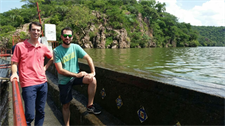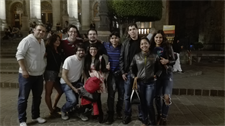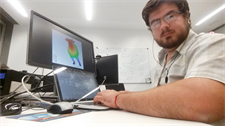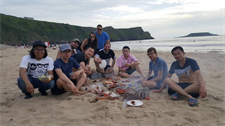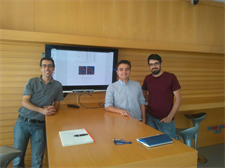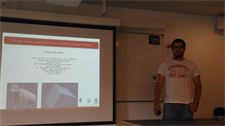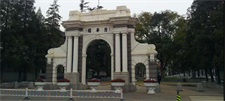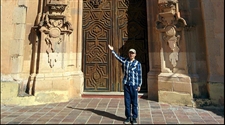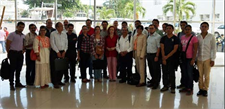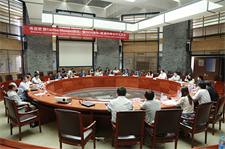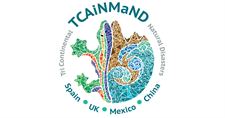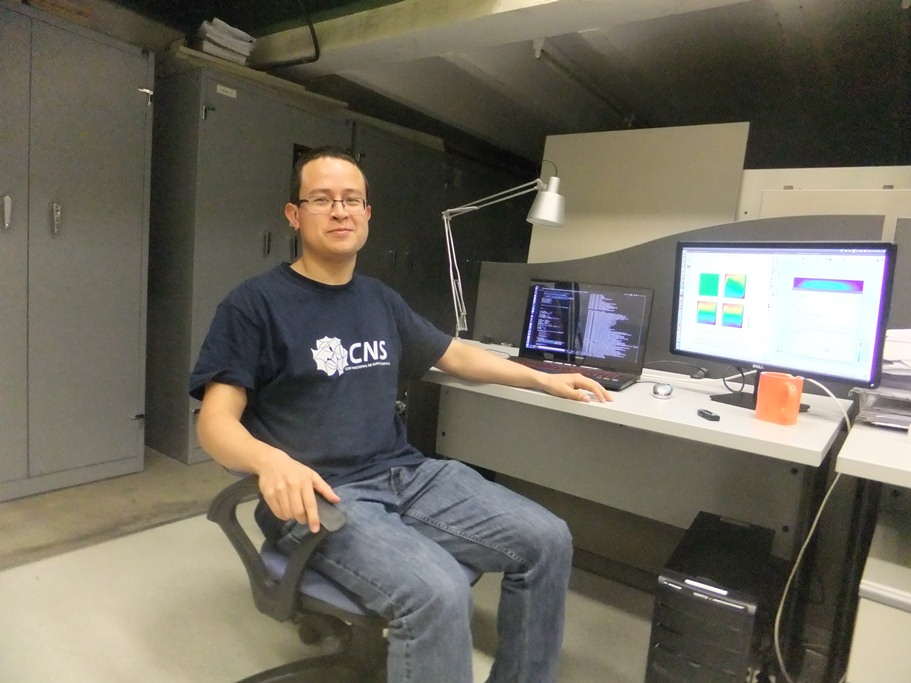|
First days in CIMAT
I’m on my fourth year of Ph.D. studies in the Dept. of Strength of Materials and Structural Engineering of the UPC, but also collaborate regularly with CIMNE. I’m pursuing a Ph.D. in Structural Analysis, with focus on constitutive modelling in computational non-linear solid mechanics. My areas of interest include, but are not limited to: numerical methods (esp. Finite Element Method), constitutive models (in particular hyperelasticity and damage), large deformation problems and applications in biomechanics. I graduated in February 2009 as an Aeronautical Engineer (M.Sc.) by the Universitat Politècnica de Catalunya (Barcelona, Spain). I then spent a year in Cranfield University (Cranfield, UK) studying a M.Sc. in Advanced Lightweight Structures and Impact. I graduated with the Course Director's Prize in September 2010 and, immediately after, returned to Barcelona to start my Ph.D. studies. During my stay in CIMAT, I will be working in WP 5: New engineering materials for a most secure buildings, in particular, on task 5.1: Characterisation of structural materials for safer buildings. My objectives for these following months are twofold: one is related to the optimization program developed in Matlab and coupled to our in-house FE program PLCd whilst the other is focused solely on PLCd. 1. Optimization program.I started developing a program which, given an experimentally obtained force-displacement curve, will adjust the material properties of a Finite Element model which will give as a result the desired curve. At present, it is written in Matlab but I expect to be able to make use of CIMAT’s expertise in optimization and, hopefully, migrate the code to another language which will allow me to use their consolidated code, OPTIMATE. The aim is to be able to define the material properties of a structure based on a simple test on part of this structure. I envision a situation in which a building might have been damaged due to a natural disaster and engineers must assess the extent of this damage in order to evaluate the actions to be taken. To such aim, one would be interested in reproducing the structure using FEM. However, some material properties might be unknown. Then, by performing a simple tensile test on a small representative piece of material, one could obtain a force-displacement curve which, thanks to the method being developed, would allow pinpointing the properties of the materials composing this structure. 2. Finite Element program, PLCd.The optimization code is coupled to the FE program PLCd. Each evaluation of the objective function requires launching a full calculation in PLCd. This is precisely the bottleneck of the whole calculation process. We expect that, by parallelizing the element loop in PLCd, the calculation time will be considerably reduced and, thus, the overall performance of the optimization code will improve considerably. The parallelization in OpenMP will be no easy task since PLCd is a large and complex code, which counts with different memory access methods, many databases and common modules. I am really looking forward to making the most of these two following months. Although my time here will surely fly by, if I work hard I expect to be able to complete our main objectives: have a functional optimization program coupled to a parallelized PLCd code. I’m very grateful to CIMNE and CIMAT for giving me this opportunity to improve and advance in my professional career. In addition, I’m sure I will forever cherish the personal experience I will take back to Barcelona with me. In particular, I want to thank my advisor, Dr. Sergio Oller, for including me in the TCAiNMaND project and for his constant support. I am also indebted to Dr. Salvador Botello for receiving me in CIMAT and helping me define and layout the work to do during my stay here. Many thanks to Miguel Vargas, for working side by side with me on the gruelling task of parallelizing PLCd and on understanding the inner workings of OPTIME. Without him, I would be completely lost. Last but not least, I want to thank Susana Montalvo, Javier Mora and Sònia Sagristà for all the time they dedicated to help me prepare my stay and define and understand my role in TCAiNMaND. Special appreciations to Susana Montalvo, for welcoming me with her arms wide open, showing me around CIMAT and Guanajuato and, basically, making me feel at home during my first week here. Ester Comellas Sanfeliu |
|


